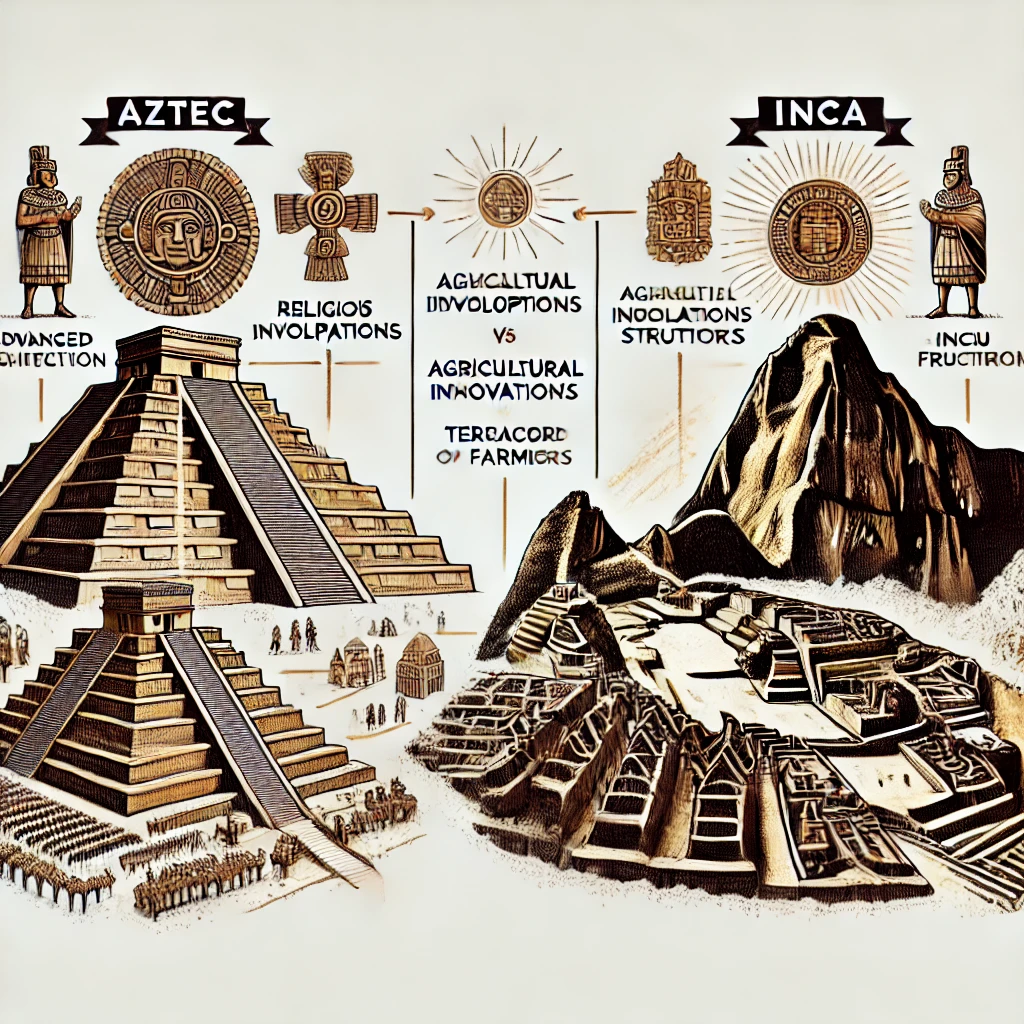Explore how geographical location, social structure, and religious beliefs shape cultures and communities around the world for a deeper understanding of societal dynamics.The Aztec and Inca civilizations, two of the most prominent societies in pre-Columbian America, captivate the imagination with their remarkable achievements and rich histories. While separated by vast distances and unique landscapes—one flourishing in the valleys of central Mexico and the other in the heights of the Andean mountains—these cultures share striking similarities in their development. Both civilizations established complex social structures that organized their communities and reinforced their power. Additionally, their deeply rooted religious beliefs played a pivotal role in shaping their societies, governing daily life, politics, and cultural practices. In this blog post, we will explore the geographical locations of the Aztecs and Incas, delve into their intricate social hierarchies, and examine their spiritual frameworks, revealing the profound connections that unite these two great civilizations.
Geographical Location
The Aztec and Inca civilizations were situated in distinct geographical regions of the Americas, which influenced their development significantly. The Aztecs thrived in the central region of Mexico, primarily in the Valley of Mexico, a high plateau surrounded by mountains and volcanic peaks. This location provided fertile land, allowing them to cultivate crops such as maize, beans, and squash, which were staples of their diet.
In contrast, the Inca civilization was located in the Andes Mountains, specifically in what is now Peru. The Inca Empire extended from the southern parts of Colombia down through Chile, covering a range of altitudes and climates. This elevation meant that the Inca adapted their agricultural practices to different environmental conditions, using terrace farming techniques to maximize arable land on the steep slopes.
Both civilizations were influenced by their geographical locations, leading to unique adaptations in agriculture, trade, and settlement patterns. For instance, while the Aztecs established their capital city of Tenochtitlán on an island in Lake Texcoco, the Inca built their famous city of Machu Picchu high in the mountains, illustrating their ingenuity and adaptability to their respective environments.
Social Structure
The social structure of the Aztec and Inca civilizations was complex and hierarchical, with a clear distinction between various classes. Both civilizations featured a ruling elite that held significant power and privilege, but the details of their social organization varied.
In the Aztec civilization, society was divided into several classes, including the nobility, priests, warriors, merchants, and commoners. The nobility wielded considerable influence, owning large estates and having the authority to govern. Priests played a crucial role in society, overseeing religious ceremonies that were vital to the Aztec worldview. Commoners, while less powerful, could rise in status through military achievements or trade.
Conversely, the Inca civilization had a more centralized structure with the Sapa Inca, or emperor, at the top, who was considered a god-like figure. Below him were the nobility and administrators, who helped govern the vast empire. The Ayllu system was fundamental in Inca society, grouping families for agricultural work and mutual support, creating a strong sense of community. Both civilizations exhibited a strong emphasis on kinship and community, reflecting their cultural values and social priorities.
Religious Beliefs
The Aztec and Inca civilizations, although distinct in many aspects, shared striking similarities in their religious beliefs. Both societies had a rich tapestry of mythology and rituals that played a crucial role in their daily lives and governance.
Central to both the Aztec and Inca religions was the concept of polytheism, which involved the worship of multiple gods related to various aspects of life, such as agriculture, warfare, and fertility. For example, the Aztecs revered deities like Quetzalcoatl, the god of wind and knowledge, while the Inca honored Inti, the sun god. Both civilizations believed that their gods required offerings and sacrifices to maintain cosmic order and ensure prosperity.
| Aspect | Aztec Religion | Inca Religion |
|---|---|---|
| Type of Worship | Temple sacrifices, rituals | Sun worship, ancestor veneration |
| Key Deities | Quetzalcoatl, Tezcatlipoca | Inti, Pachamama |
| Religious Texts | Codices | Oral traditions |
Both civilizations also performed elaborate rituals and ceremonies to appease their gods. These activities often included music, dance, and feasting, reinforcing community bonds and showcasing the importance of religion in public life. Additionally, both societies built grand temples as centers of worship, symbolizing their devotion and the architectural prowess of their civilizations.
Frequently Asked Questions
Both civilizations developed complex societies with advanced agricultural practices, monumental architecture, and rich cultural traditions.Yes, both civilizations practiced polytheism and had a significant emphasis on religious rituals, including human sacrifice in the Aztec culture, to appease their gods.Both civilizations had centralized governments led by a ruler, with the Inca emperor considered a divine figure, while the Aztecs had a king who was also viewed as a priest.Agriculture was crucial for both the Aztecs and Incas, who developed innovative farming techniques such as chinampas and terracing to maximize crop production.Yes, both civilizations produced remarkable art, including pottery, textiles, and intricate metalwork, which reflected their cultural values and beliefs.Trade was vital for both civilizations, allowing them to acquire resources that were not locally available, with the Inca using a system of state-controlled trade and the Aztecs employing an extensive market system.Both the Aztec and Inca civilizations faced decline due to European colonization, which brought warfare, disease, and significant social disruption.


